Sports
What Cameron Brink’s injury means for Sparks and Team USA’s 3×3
Published
3 مہینے agoon
By
l955w
It’s a crushing blow for Brink, the Sparks, the WNBA and USA Basketball, which must replace her on the 3×3 roster. Brink was injured in the opening minutes of the Sparks’ loss Tuesday at the Connecticut Sun. The No. 2 pick in April’s WNBA draft, she was off to a solid career launch with the Sparks, starting all 15 games.
Now Los Angeles — which hasn’t made the playoffs since 2020 and is in what might be called a franchise refresh with longtime star Nneka Ogwumike now with the Seattle Storm — must move on without Brink. And Brink must deal with the dual disappointments of missing out on a trip to the Olympics and not being able to complete the rest of her rookie season.
The New York Liberty dealt with a similar issue in 2020 when No. 1 pick Sabrina Ionsecu suffered a season-ending ankle injury three games into her rookie season. Ionescu recovered well: She returned in 2021, was an All-Star and second-team WNBA pick last season and is part of the U.S. 5-on-5 Olympic team this year.
The outlook is still bright for Brink, although that doesn’t provide much solace for her or the 4-11 Sparks right now. Here’s a look at how Brink has played thus far, where the Sparks go from here this season and what Brink’s future might hold.
Pelton: As expected, Brink had been one of the WNBA’s top rookies, rating as a league-average player right away. I have her third among the four players from this year’s draft who have performed better than replacement level in at least 100 minutes of action:
In particular, Brink has excelled defensively, blocking a league-high 9% of opponent 2-point attempts. Among players who have defended at least 40 shot attempts in the paint according to Second Spectrum tracking, Brink ranks fifth with opponents hitting just 51% of those shots.
Foul trouble was predictably an issue for Brink, who was averaging 6.5 fouls per 36 minutes, but the Sparks can feel good about how well she played before the injury.
Voepel: Brink needed just a few pro games to show she was on her way to being one of the elite shot blockers in the WNBA. Her early comps in blocks were to players like Margo Dydek, Lisa Leslie and Brittney Griner. From timing, anticipation and coordination standpoints, Brink clearly has what it takes to be a rim protector. That’s a tough thing for the Sparks to lose right now.
Pelton: The silver lining for the Sparks is backup center Li Yueru has been coming on lately during her first extended WNBA action after playing just 82 minutes as a rookie with the Chicago Sky in 2022. Li had a career-high 18 points at Seattle earlier this month, finishing the game over Brink, and 11 points on 5-of-6 shooting in the game when Brink was injured. Per 36 minutes, her averages of 14.2 points and 10.6 rebounds are better than Brink (12.3 and 8.7), although Li is nowhere near the kind of deterrent around the rim as a shot blocker.
Down the road, Los Angeles could get Azura Stevens back in the lineup before long. When Stevens initially suffered a left arm injury playing in China and underwent surgery, the Sparks indicated she’d be reevaluated in 12 weeks. We’ll hit that mark on Friday. Stevens can play either center alongside Dearica Hamby or power forward next to Li.
If Stevens is still expected to miss at least another three weeks, Los Angeles would be eligible for a hardship exception to add a 13th player to the roster. Queen Egbo, recently waived by Connecticut, would be a logical target. Alternatively, the Sparks could bring back Hungarian center Virag Kiss, who was with the team in training camp.
Voepel: Roster decisions are always difficult, and it raised some eyebrows when the Sparks waived Monique Billings before the season. The 6-foot-4 Billings, who played six seasons with the Atlanta Dream, is a veteran post presence not easy to find. It was good fortune for the Dallas Wings, who signed Billings four days after the Sparks let her go. She is averaging career highs of 11.9 points and 8.8 rebounds now for the Wings.
It’s water under the bridge for the Sparks. It’s too early to write off the postseason, but realistically everything just got even tougher for Los Angeles. As Kevin said, Li is promising — she’s just 25 and is coming off playing a season-high 26 minutes on Tuesday. And Stevens can make a noticeable impact whenever she returns.
A lot of focus now will go on forward Rickea Jackson, the Sparks’ other 2024 draft lottery pick this season. The No. 4 selection, she is averaging 10.3 points and 3.6 rebounds. Jackson’s best game so far was a 19-point, 10-rebound performance vs. the Minnesota Lynx on June 14. Jackson has scored in double figures in four of her last five games, shooting 56.1% from the field in that span. She’s a talented scorer who is also capable of being a versatile defender for the Sparks.
Pelton: Based on FIBA’s 3×3 rules, USA Basketball must replace Brink with another player who has sufficient qualifying points in 3×3 competitions, meaning the USA can’t simply pick Aliyah Boston after she was left out of the Olympic roster for the traditional 5-on-5 team.
Additionally, USA Basketball will probably want to fill Brink’s spot with another post to complement guard Hailey Van Lith, wing Rhyne Howard and fellow post Cierra Burdick. Looking through the FIBA individual rankings, the most logical replacement is Hamby, who automatically qualifies by ranking among the top 20 U.S. players in 3×3 points.
Hamby is having an All-Star season in the WNBA — she was among the picks by ESPN’s Alexa Philppou for the roster that will take on the USA’s 5-on-5 Olympic team in this year’s WNBA All-Star Game — and brings more 3×3 experience than other players of that ilk.
If USA Basketball is less concerned about replacing Brink’s size, Howard’s Atlanta Dream teammate Allisha Gray would be another strong candidate after helping the USA win the inaugural 3×3 gold in 2021 in Tokyo. Or the USA could bring back Katie Lou Samuelson of the Indiana Fever, who was set to be part of the team three years ago before contracting COVID-19 and missing out.
Voepel: Agree with Kevin: Hamby, Samuelson or Gray appear to be the best picks to replace Brink, who has put in a lot of time with 3×3. It’s heartbreaking she will miss the Olympics, something Samuelson understands all too well.
Last year, Brink was MVP of the FIBA 3×3 Women’s World Cup in Vienna, Austria, as the United States won gold. She also competed in two 2023 FIBA 3×3 Women’s Series stops as the Americans were second in both Montreal and Quebec.
The 3×3 tournament proved really popular among U.S. viewers in 2021, when Gray, Kelsey Plum, Jackie Young and Stefanie Dolson won gold. Young and Plum are now on the 5-on-5 team for Paris, which might be in Brink’s future.
Voepel: As difficult as ACL injuries and rehab are, it’s something countless players have come back from to have outstanding careers. Brink will have time to recover and hopefully return for the 2025 WNBA season. And she could be part of the 5-on-5 or 3×3 team in the 2028 Los Angeles Games.
Pelton: Brink remains a building block for the Sparks, along with Jackson and whoever Los Angeles drafts next year — likely in the lottery. The hope is this injury happening relatively early in the season allows Brink to get back on the court in time for 2025 training camp. Consider that almost exactly a year ago (June 20), Connecticut center Brionna Jones suffered a similar season-ending injury, an Achilles rupture. Now Jones has played all 14 games at her usual All-Star level and helped the Sun to the best start in franchise history.
You may like
-
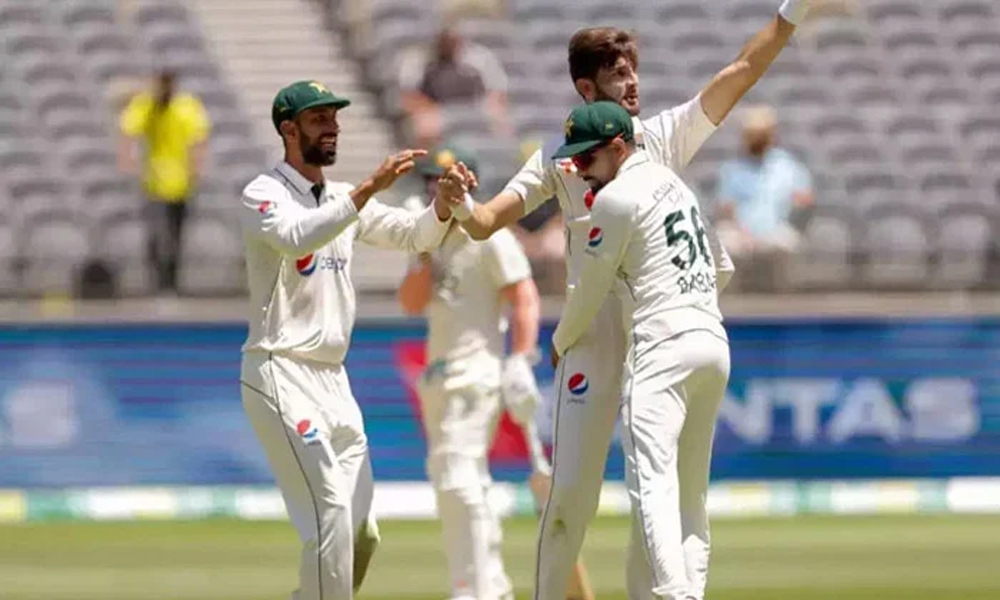

PCB advertises for Red Ball High-Performance Coach
-
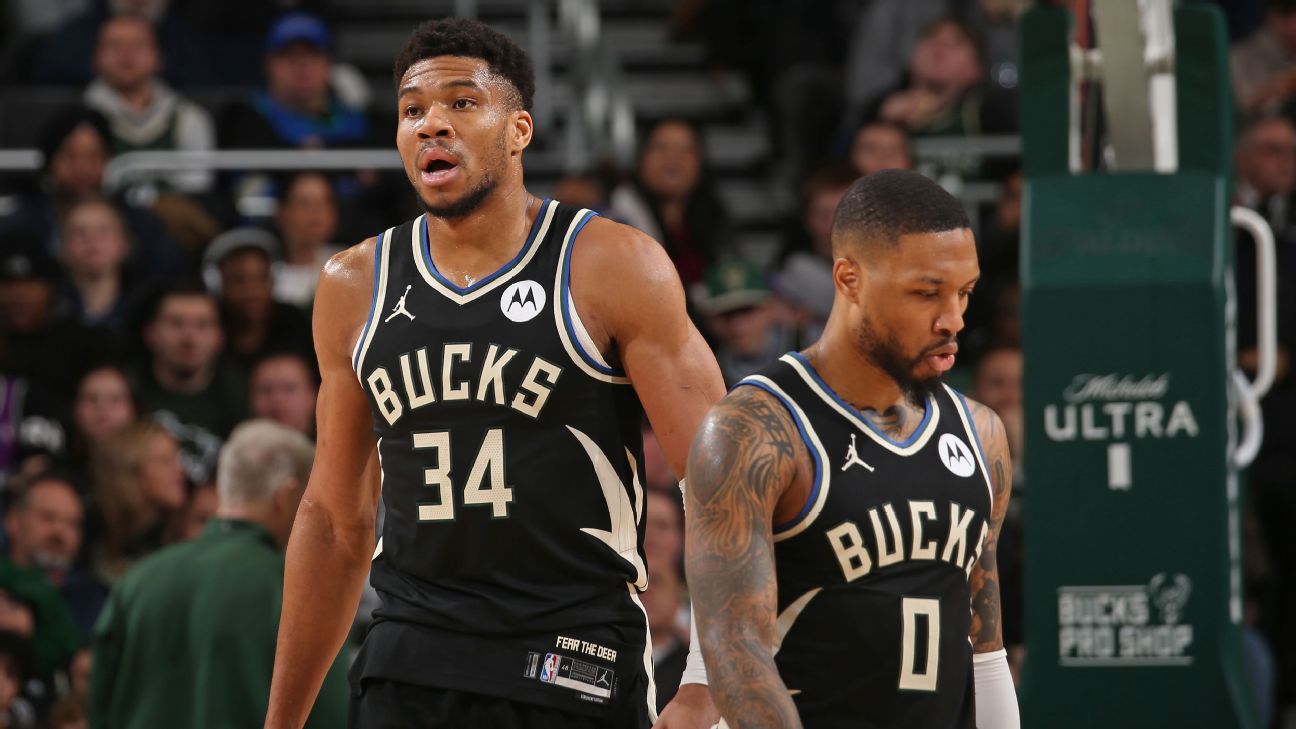

Is continuity enough to get the Bucks back into title contention?
-
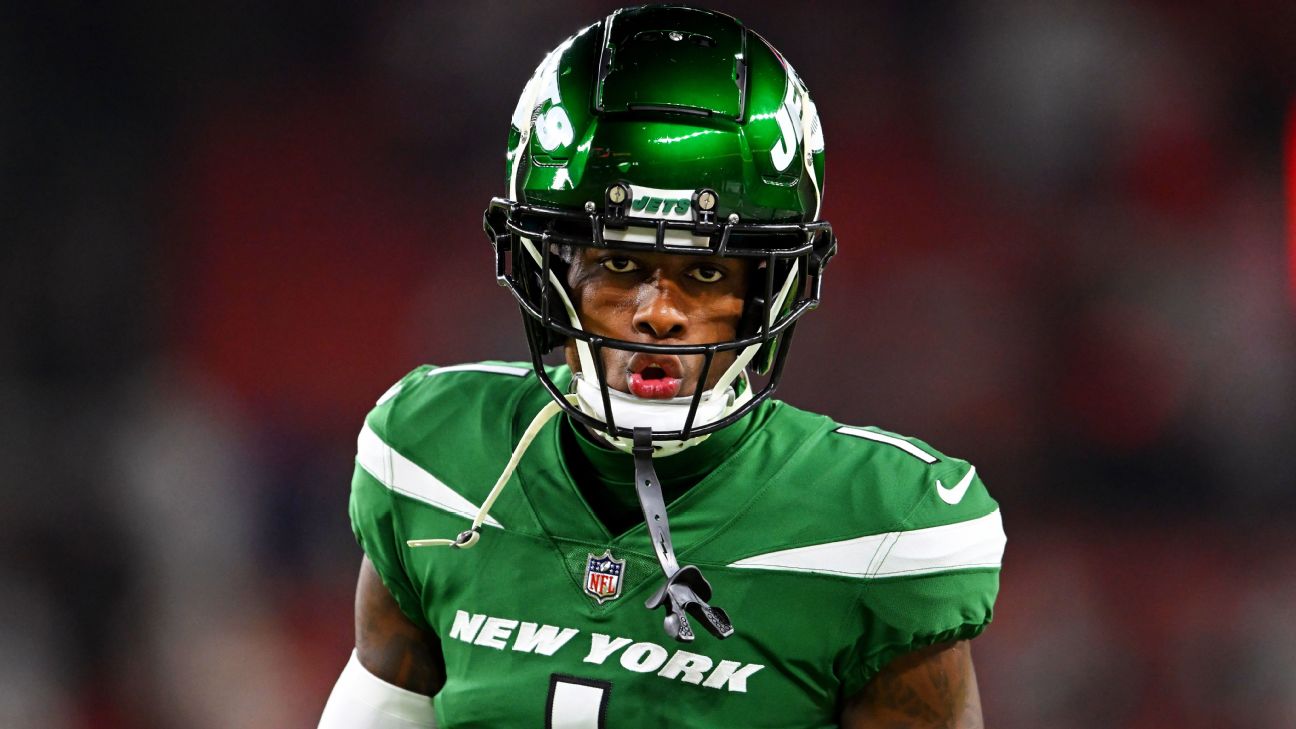

Will Sauce Gardner’s quest to be the best CB be overshadowed by lack of interceptions?
-


Revised schedule of Pakistan vs England Test series announced
-


ICC delegation satisfied over Champions Trophy 2025 preparations
-
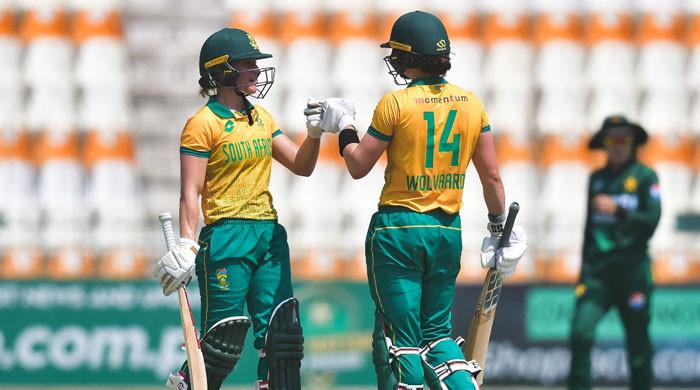

South Africa inflict 2-1 defeat over Pakistan in women’s T20I series
-
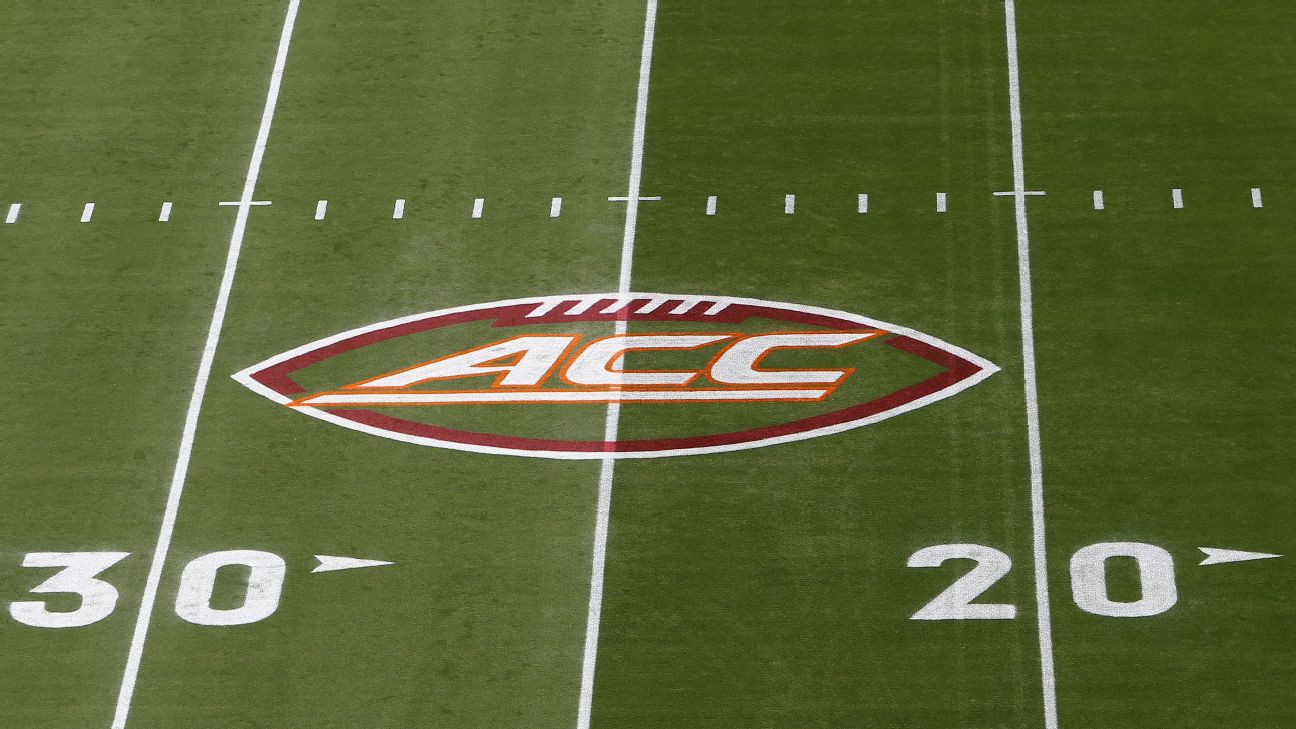

Sources: ACC, Clemson, FSU renew revenue talks
Sports
PCB advertises for Red Ball High-Performance Coach
Published
17 گھنٹے agoon
ستمبر 21, 2024By
l955w
Lahore: Pakistan Cricket Board (PCB) issued an advertisement to search for a High-Performance Coach for the Red Ball Team.
The High-Performance Coach will assist the Head Coach in game planning while he will also work closely with the Head Coach in pre- and post-tournament preparations to enhance performance.
As per PCB, five years’ experience and minimum level two coaches are eligible to apply, aspirants can submit applications till October 7.
In the series against Bangladesh, Tim Nelson took over as high-performance coach, brought in by Red Ball coach Jason Gillespie from South Australia.
It is also reported that Tim Nelson will be Red Ball’s high-performance coach, advertised as a necessary step for a permanent appointment.
Sports
Is continuity enough to get the Bucks back into title contention?
Published
22 گھنٹے agoon
ستمبر 21, 2024By
l955w
Trent had known Rivers since he was 6 years old thanks to his father, Gary Trent Sr., whose NBA career overlapped with Rivers’. Trent Jr. had been a productive player with the Toronto Raptors for three and a half seasons but failed to reach an extension or find a multiyear deal on the free agent market. Word was out that Trent could be seeking a one-year deal for the 2024-25 season, and Rivers jumped at the opportunity.
The Bucks were seeking a replacement in their starting lineup for guard Malik Beasley and saw a youthful energy in Trent, who could fit smoothly alongside Milwaukee’s superstar duo of Giannis Antetokounmpo and Damian Lillard.
Signing Trent to a one-year deal served as the biggest offseason addition for a team that prioritized depth signings over bold moves. The Bucks also swapped out players such as Jae Crowder and Patrick Beverley, who saw their roles and production reduced during the postseason, for a new crew of veteran backups in Delon Wright and Taurean Prince.
After a year of change and turnover for the Bucks — in the past 12 months they swapped Jrue Holiday for Lillard, and hired and fired coach Adrian Griffin before turning to Rivers midway through the season — a quiet summer was welcome for a team that enters the 2024-25 season trying to balance the benefits of continuity with the urgency of its championship expectations.
“We have that stability,” Antetokounmpo said the day after the team’s first-round playoff loss to the Indiana Pacers. “We’re not questioning and trying to figure out how it’s going to look moving forward.
“Now that you know, you just got to work.”
Bucks general manager Jon Horst was limited in his flexibility to change his roster this offseason. Milwaukee’s draft picks were depleted by the trade for Holiday in 2020 and for Lillard last year. Because of the restrictions of the new collective bargaining agreement, the Bucks did not have salary cap space and weren’t allowed to aggregate contracts, acquire a player via sign-and-trade or use the tax midlevel exception.
It left them with little options aside from adding players via the veterans minimum.
Besides, it had still been less than a year since Milwaukee swooped in for Lillard before training camp, sending a package to the Portland Trail Blazers that included Holiday — the starting point guard on the Bucks’ 2021 championship team — who was then sent to the eventual champion Boston Celtics. It was a bold move that paired an All-NBA guard in Lillard with a two-time MVP in Antetokounmpo, with each being the most accomplished teammate either player had ever played with.
Lillard’s arrival also paid off in another way, as Antetokounmpo committed to the Bucks by signing a three-year, $186 million max extension that begins this season.
Antetokounmpo inked his deal one day before the start of the season, but the Bucks’ positive momentum didn’t carry into the games.
Lillard was slow to adjust to a new environment and struggled to find on-court chemistry with Antetokounmpo. Griffin was fired 43 games into the season (with a 30-13 record) before the team turned to Rivers, who went 17-19. With Antetokounmpo missing the entire six-game series against the Pacers because of a strained left calf and Lillard limited by an Achilles injury, the Bucks crashed out in the first round of the playoffs for a second straight season.
When Rivers took over the team in February, he acknowledged how difficult it would be to turn a team around midseason. Now with a full offseason and training camp, he will have an opportunity to establish a style of play, including by adding role players who better fit his vision.
“Think about it: Giannis worked out all [last] summer not knowing he was going to have Dame,” Rivers said the day after last season’s playoff exit. “Dame worked out a little bit, not knowing he was going to have Giannis. Khris [Middleton], the same way. Now all three of them get to work out this summer knowing some of the things we’re going to do.
“The most important stuff is the sets and the stuff that you’re going to run, giving it to them long before camp starts. Because it’s easy for a star player to understand what he can do, it’s better when he understands how he can make everybody else better through those sets.”
The Bucks are betting on a full offseason and training camp to help build chemistry for Lillard and Antetokounmpo. Still, they were encouraged by the numbers with those two players on the floor last season: The team was plus-10.2 points per 100 possessions last season when their two stars shared the floor.
“I’m willing to put in work this summer. I think I have guys around me that they’re willing to do so,” Antetokounmpo said at the end of last season. “I saw how Dame was after the [playoffs]. I saw how Khris [Middleton] was after the game. … I know they’re going to put in the work.”
The question for Milwaukee is how the Bucks will compare to the rest of a stacked Eastern Conference.
Boston is coming off a historic season in which it won its league-leading 18th NBA championship. The Philadelphia 76ers just reloaded by adding superstar Paul George to play alongside Joel Embiid and emerging star Tyrese Maxey. The New York Knicks strengthened their core by adding Mikal Bridges. Emerging young teams, the Cleveland Cavaliers, Orlando Magic and Pacers, are on the rise, having finished with playoff spots last season.
Meanwhile, the Bucks return one of the oldest rosters in the NBA with four of their projected starters over 30. Antetokounmpo, who has been injured during the last two postseasons, turns 30 this season. Lillard will be 35 in October. Middleton is 34 and coming off offseason surgery on both ankles. Center Brook Lopez is 36.
“I always like a team that wins to have a little bit of experience, which comes from being a little bit older, knowing how to play the game and have that corporate knowledge of the game,” Antetokounmpo said at the end of last season. “And a little bit of energy.”
The age of its roster and the pressure to maximize each season of Antetokounmpo’s prime — “With Giannis, you’re always on the clock,” Horst told ESPN at the start of last season — guided Milwaukee’s bold moves over the past year in pursuit of another title.
Now the Bucks are counting on an offseason defined by continuity, a few additions to their depth and some better health during the postseason to give them a chance at another championship.
“We’re getting older. We’re not getting any younger, but that doesn’t mean we cannot still perform at a high level,” Antetokounmpo said. “It’s hard to say, ‘Yeah, we’re old and you have to make changes.’ Because these guys, they’re beasts.”
Sports
Will Sauce Gardner’s quest to be the best CB be overshadowed by lack of interceptions?
Published
23 گھنٹے agoon
ستمبر 21, 2024By
l955w
FLORHAM PARK, N.J. — Sauce Gardner doesn’t do vacations. The New York Jets cornerback doesn’t believe in them. The idea of chilling at a five-star resort, sipping fruity libations on a white-sand beach, doesn’t appeal to him. First of all, he doesn’t drink alcohol. No sauce for Sauce. Secondly, he’s a homebody. The Jets’ trip to London in two weeks to face the Minnesota Vikings will be his first time out of the country. He said he hasn’t taken a true vacation since entering the NFL in 2022, offering an existential reason. “Me, personally, I just feel like you’re just trying to escape the lifestyle that you live,” Gardner said in a quiet moment at his locker. “We play football, and we should be training. So going on that long vacation is getting away from what you’re supposed to be.” Which explains why he reported to the Jets’ facility two weeks after last season ended to begin training, three months ahead of the official start to the offseason program. It’s why his new, sprawling home in New Jersey includes a recovery room, complete with a red-light therapy bed, sauna, cold tub, treadmill and stationary bike. From the time he was 4 years old, playing flag football in the Tiny Mites league in the Seven Mile section of Detroit, Gardner’s singular focus has been to play in the NFL and be the best cornerback there ever was. A lot of kids dream that dream, but his early-career trajectory aligns with his life plan, and he’s just 24. Gardner is the only cornerback since the NFL-AFL merger in 1970 to be named first-team All-Pro in each of his first two seasons. Only three defensive players have pulled that off: former New York Giants legend Lawrence Taylor, Dallas Cowboys pass rusher Micah Parsons and Gardner, who said his individual goal this season is to be Defensive Player of the Year. Now if he could just get his hands on a pass or two, maybe that would silence critics who suggest the sauce isn’t as advertised. He will take a 26-game interception slump into Thursday night against the New England Patriots at MetLife Stadium (8:15 p.m. ET, Prime Video). Big deal or nah? LONG BEFORE HE shadowed wide receivers, Gardner shadowed his big brother, Allante. Despite a six-year age difference, the two were inseparable growing up. Even though there was an open room in their house, they decided to share the same bedroom. Allante played football, so Sauce played football, following him into backyard games against the big kids. When Allante changed his uniform to No. 2, Sauce switched to No. 2. When Allante worked out with a trainer during his college offseasons — he was a running back/wide receiver at Saginaw Valley State and Lakeland University — Sauce tagged along. “He was always right next to me,” said Allante, who knew there was something special about Sauce when he learned at the age of 5 to ride a bike with no training or training wheels. Gardner was always fearless, according to Allante, who said his kid brother once broke his arm doing a backflip off a fence. He said they both acquired their work ethic from their mother, Alisa, a single mom who worked two jobs to support them. If one of them wanted to attend a football camp, she worked overtime to pay the fees. Gardner said one memory of living at the corner of Rowe Street and Seven Mile East made an impact. When he was 14, he saw a man fatally shot outside a liquor store. Out of fear, he didn’t tell anyone. “It just made me come to the realization that you can’t take anything for granted,” Gardner said. “Me just witnessing that, I was like, ‘Dang.’ I just had to make sure I was locked in on everything — football, school, all that — because I knew ultimately where I wanted to go.” Whatever direction Gardner goes, Allante is there with him — even if it’s not physically. Allante, who still lives in Detroit, is a vice president at Vayner Sports — the company that represents his brother. Sounding like an agent, but speaking as a blood relative, Allante believes Gardner has the potential to be “a once-in-a-lifetime player.” Cornerbacks are often evaluated based on their interception total. That calculus can’t be applied to Gardner, who has as many Pro Bowls on his résumé as career picks (two). In an ESPN survey of nearly 80 NFL coaches, scouts and executives, one unnamed personnel evaluator called Gardner “one of the most overrated players in the league.” The same survey ranked him the third-best corner, behind the Denver Broncos’ Pat Surtain II and the Cleveland Browns’ Denzel Ward. Former star Richard Sherman, a three-time All-Pro cornerback, believes Gardner has benefitted from geography. “Obviously, being in the New York market helps,” Sherman, a Prime Video analyst, said on a conference call with reporters. “It helped [Darrelle] Revis, it helps Sauce. … He’s incredibly worthy [of his accolades]. He has been named first-team All-Pro. It’s not because he hasn’t played well, but it definitely helps playing in that New York market and getting that focus on you and then playing well while you’ve got that focus.” For his money, Sherman said Surtain is the best all-around corner in the sport, adding, “If he was in a big market, if he was playing for the Dallas Cowboys, I don’t think there would be any debate because people would be watching him all the time.” WHEN TOLD OF Sherman’s comments, Gardner shrugged. He agreed to a certain extent, saying he does profit from playing in New York. But he said that it’s a double-edged sword: More eyes on you means more pressure. Even Sherman acknowledged, “New York can chew you up and spit you out the same way it can raise your game.” Gardner added, “A lot of times, there’s no in-between.” Gardner welcomes the scrutiny. Asked if he’s the best corner, he said simply, “I try to do it as if I’m the best.” Former cornerback Jason McCourty, who played 13 years, had initial questions about Gardner despite his lofty draft pedigree — fourth overall in 2022. Those questions didn’t last long. “Even coming in, I’m wondering how he’s going to do it, covering these guys man-to-man, coming from [the University of] Cincinnati — and he’s just been awesome,” said McCourty, now an ESPN analyst, in a phone interview. “To step into the NFL and to be able to cover some of the best wide receivers, to be an All-Pro and to hit the ground running is just completely elite.” But what about the lack of interceptions? McCourty said it shouldn’t be a barometer, that Gardner’s ability to neutralize wide receivers trumps his low interception total. Sherman believes the game has changed. Gone are the days, he said, when corners such as Deion Sanders and Champ Bailey made the Pro Football Hall of Fame with gaudy interception totals — 53 and 52, respectively. In 2023, Revis, the former Jets star, was elected on the first ballot with 29. “I do think interceptions are important, but I guess, in this day and age, [people] don’t because there’s just not a lot of guys getting them,” said Sherman, who made 37 in his career. While the interception total may not be eye-popping, Gardner is a pass-breakup machine. His career total of 33 is the third most among corners since he entered the league. If he’s getting close enough to defend passes, in theory, he should be catching some of them. He knows this; he doesn’t shy away from it. Asked his goals for 2024, he said, “Get more picks and keep grinding for that Defensive Player of the Year [award].” He wants at least four or five interceptions. Gardner spends time after practice on every-day drills, including catching balls from a Jugs machine. His coaches love his work ethic. As cornerbacks coach Tony Oden likes to say, “Just when you think you’ve arrived as a player … bad things start to happen.” Whenever coach Robert Saleh is asked about ways in which Gardner can improve, he usually responds: Intercept the ball more often. Oden, always pushing his protégé, said “there’s more meat on the bone.” Perhaps, but his career is off to a historic start. He has pitched a league-high six shutouts since 2022 — games in which he allowed zero receptions as the nearest defender with a minimum of 20 coverage snaps, according to NFL Next Gen Stats. Gardner received the All-Pro nod with a zero-interception performance last season. For a corner, that hadn’t occurred since 2010, when Revis and Nnamdi Asomugha both did it. Uncommonly tall for a corner at 6-foot-3, with 33½-inch arms, Gardner makes it difficult for receivers to escape his clutches. His size and physicality allow him to jam bigger receivers at the line of scrimmage, according to McCourty. What really impresses McCourty is how Gardner can stick to smaller, quicker receivers at the top of their routes. These skills, he believes, could make him one of the best corners of this era. “When you have a longer guy, a taller guy that can run, it’s kind of tough for a receiver,” Tennessee Titans receiver Tyler Boyd said. “It’s tough to just run away from the guy, knowing how long and athletic he is. But don’t get me wrong, he’s beatable. Every DB in this league is beatable.” The Titans proved that Sunday, beating Gardner on a 40-yard touchdown pass to Calvin Ridley. The coverage was tight, but quarterback Will Levis dropped the pass between Gardner and safety Chuck Clark. All told, Gardner allowed five catches for 97 yards when targeted, his most yards allowed as the nearest defender in his career, according to NFL Next Gen Stats. It was an uncharacteristic day for Gardner, who rarely surrenders chunk plays. Afterward, in the locker room, he was shaking his head. “I still don’t know how he caught that,” he said. IN THE SEASON-OPENING loss to the San Francisco 49ers, Gardner recognized a gadget play was coming. On a third-and-5 from the Jets’ 29, he alerted teammates to watch for a reverse. Linebacker C.J. Mosley heard him before the snap, adjusted and helped trap wide receiver Deebo Samuel in the backfield. Mosley credited Gardner, calling him one of the smartest players on defense. “He’s become a real student of the game,” Mosley said. “He’s a lot more vocal than he was as a rookie.” Gardner made the tackle and was credited with his first career sack because of Samuel’s intention to throw a pass. “He’s a film junkie,” Allante said. Allante said Gardner watches about an hour of game film every night in his home theater, learning opponents’ tendencies and critiquing his own performance. He described it as a singular focus, saying his brother possessed it at an early age. “He’s a different guy,” Allante said. “He don’t drink, he don’t smoke, he don’t party.” Outside of football, Gardner plays video games — he’s an accomplished gamer — and hones his golf swing in his home simulator. Golf is a new passion. He proudly declares that he broke 90 for the first time before training camp. Life is good for Gardner. Business is booming. The price for Gardner will increase in the coming years, perhaps next year, when he’s eligible for a contract extension. The ceiling on the cornerback market was raised recently, when Jalen Ramsey ($24.1 million per year) and Surtain ($24 million) signed extensions. With another good year, Gardner could leapfrog both to become the highest-paid corner. Gardner received a phone alert when Ramsey’s deal was completed, saying his first thought was: “Dang, Pat wasn’t even the highest-paid corner for a day.” He applauded the contracts, noting that corners finally are closing the gap with the highest-paid receivers, but said he’s not looking ahead to his potential blockbuster deal. Gardner’s job as a corner is to make those receivers seem invisible. He’s also had a knack for making quarterbacks shy away from him. In two games, he has been targeted only eight times as the nearest defender, having allowed five receptions for 97 yards. In the offseason, he asked the coaches to give him the added responsibility of covering the opponents’ No. 1 receiver. Philosophically, the Jets’ staff is opposed to doing that on an every-down basis, citing scheme and personnel considerations, but they’re giving him a taste of it. In the opener, Gardner traveled with Brandon Aiyuk for a handful of plays and allowed no catches. In Week 2, despite the long touchdown to Ridley, Gardner was given a huge responsibility with the game on the line. In the final minute, with the Titans in the red zone, down by a touchdown, Gardner shadowed DeAndre Hopkins on four straight pass plays. Levis avoided that matchup. The result: Three incomplete passes, a sack and a 24-17 victory for the Jets (1-1). “We have a special talent in No. 1,” defensive coordinator Jeff Ulbrich said, “and Sauce can do some things that are so unique and special.” Gardner welcomes the challenge. He doesn’t mind playing on an island, the same way Revis did back in the day. Given his dislike for vacations, it might be the only island he enjoys.
Sports
Revised schedule of Pakistan vs England Test series announced
Published
1 دن agoon
ستمبر 20, 2024By
l955w
KARACHI: Pakistan’s cricket board on Friday announced a revised schedule for a series it will hold against England next month, ending weeks of uncertainty including reports it could be moved abroad.
The first two Tests will be held back-to-back in Multan and the last in Rawalpindi, skipping Karachi where ongoing construction at the National Stadium has forced the Pakistan Cricket Board (PCB) to tweak the schedule.
“The series will start in Multan with the first Test from October 7-11 and the second Test — originally scheduled for Karachi — has been shifted to Multan, as the stadium in Karachi is undergoing (a) major facelift for next year’s Champions Trophy,” said a statement from the PCB.
The second Test will start from October 15, while the third in Rawalpindi will be staged from October 24.
The England men’s cricket team will arrive in Multan on October 2 for their second tour of Pakistan in two years.
The announcement ended weeks of frustrating wait by the England and Wales Cricket Board who were seeking clarity on the schedule.
Moreover, there were media reports of shifting the series to the United Arab Emirates (UAE) where Pakistan was forced to play its home matches from 2010 to 2019.
Revised schedule:
7-11 Oct – First Test, Multan
15-19 Oct – Second Test, Multan 2
4-28 Oct – Third Test, Rawalpindi

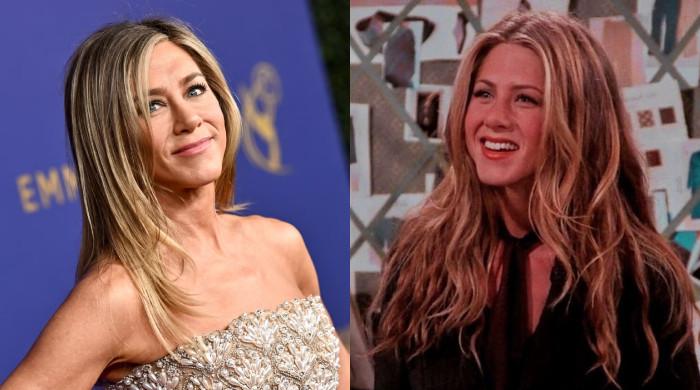
Jennifer Aniston ‘misses’ Friends, won’t do any other sitcom, ‘I doubt that’

Maren Morris snubs Diddy reference in ‘Rich’ lyrics after arrest
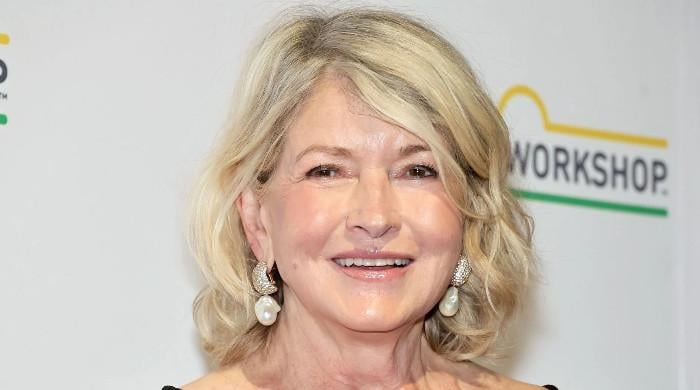
Martha Stewart uses private plane yet slams, Netflix is upset

Samsung’s new midrange Galaxy A55 has improved security, features | The Express Tribune

New Zealand in efforts to fast track consenting of major projects – Pakistan Observer
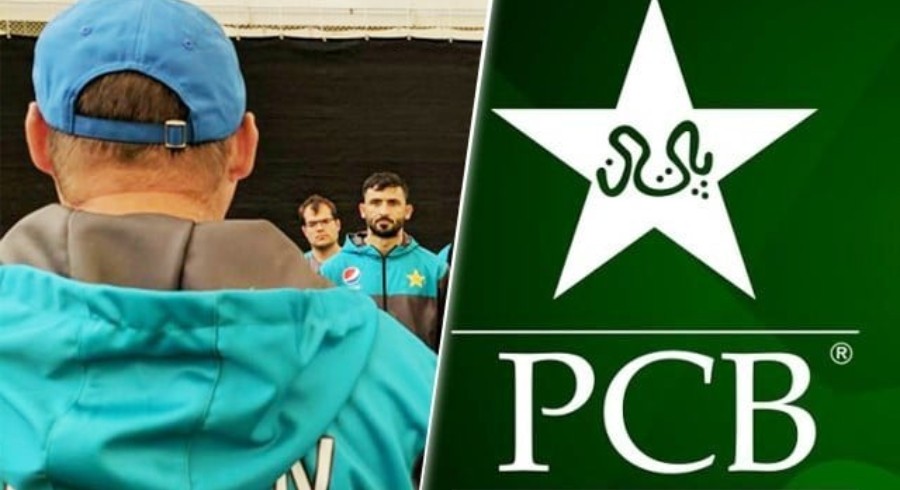
PCB opens applications for specialized red and white-ball coaches
Trending
-

 Technology6 مہینے ago
Technology6 مہینے agoSamsung’s new midrange Galaxy A55 has improved security, features | The Express Tribune
-

 Pakistan7 مہینے ago
Pakistan7 مہینے agoNew Zealand in efforts to fast track consenting of major projects – Pakistan Observer
-

 Sports6 مہینے ago
Sports6 مہینے agoPCB opens applications for specialized red and white-ball coaches
-

 Pakistan7 مہینے ago
Pakistan7 مہینے agoLegal issues hinder projects’ transfer | The Express Tribune
-
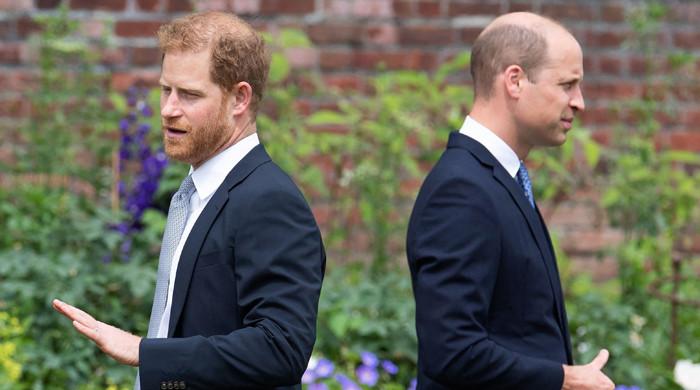
 Entertainment6 مہینے ago
Entertainment6 مہینے agoPrince William foils Prince Harry’s reunion plans ahead of UK return
-
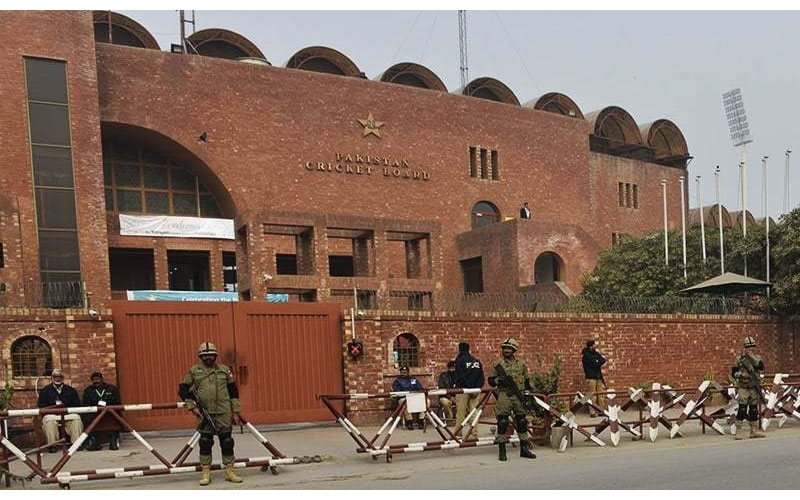
 Sports5 مہینے ago
Sports5 مہینے agoConversation continues between PCB, New Zealand for white ball series
-

 Pakistan7 مہینے ago
Pakistan7 مہینے agoNADRA NICOP fee March 2024 – Pakistan Observer
-

 Pakistan6 مہینے ago
Pakistan6 مہینے agoExperts call for regulation of ChatGPT in education | The Express Tribune
